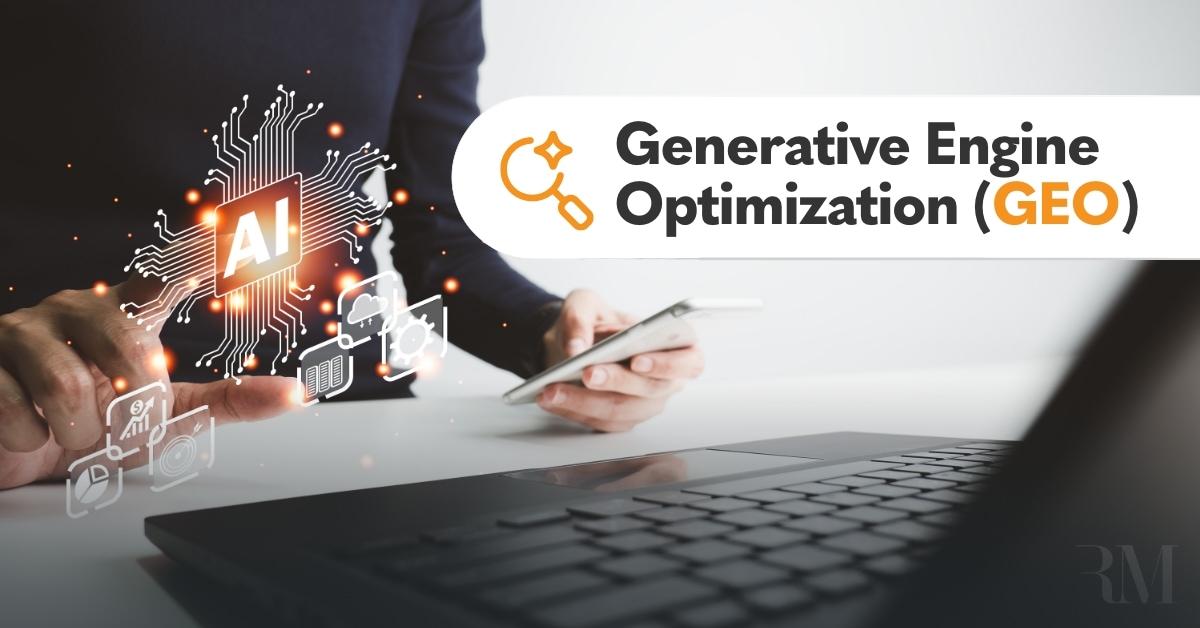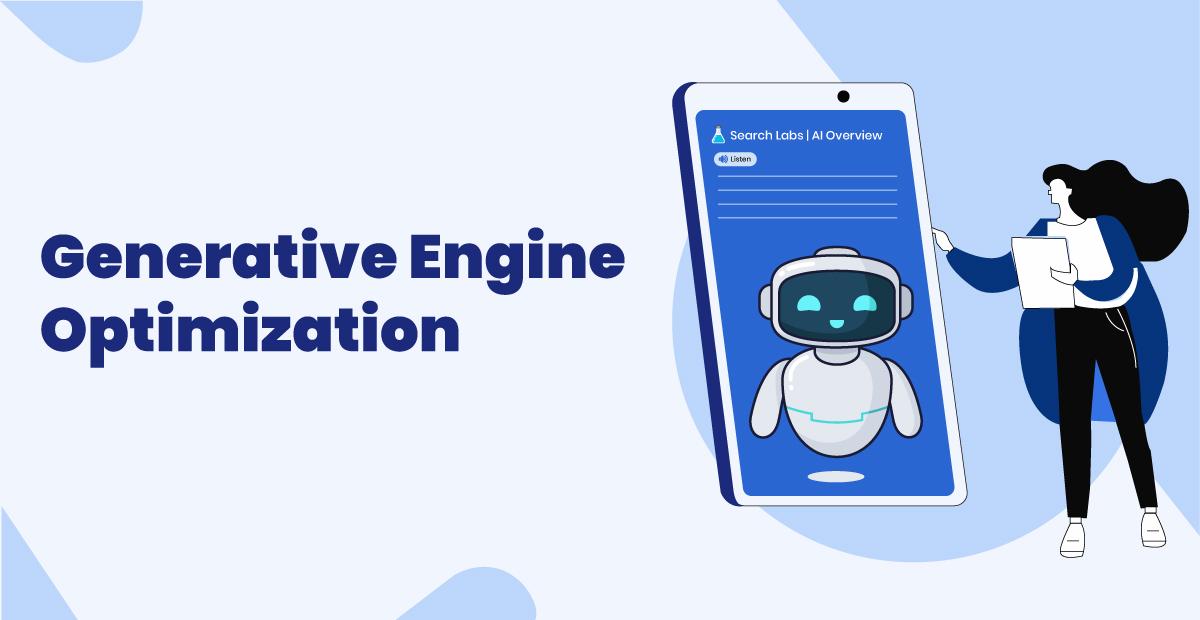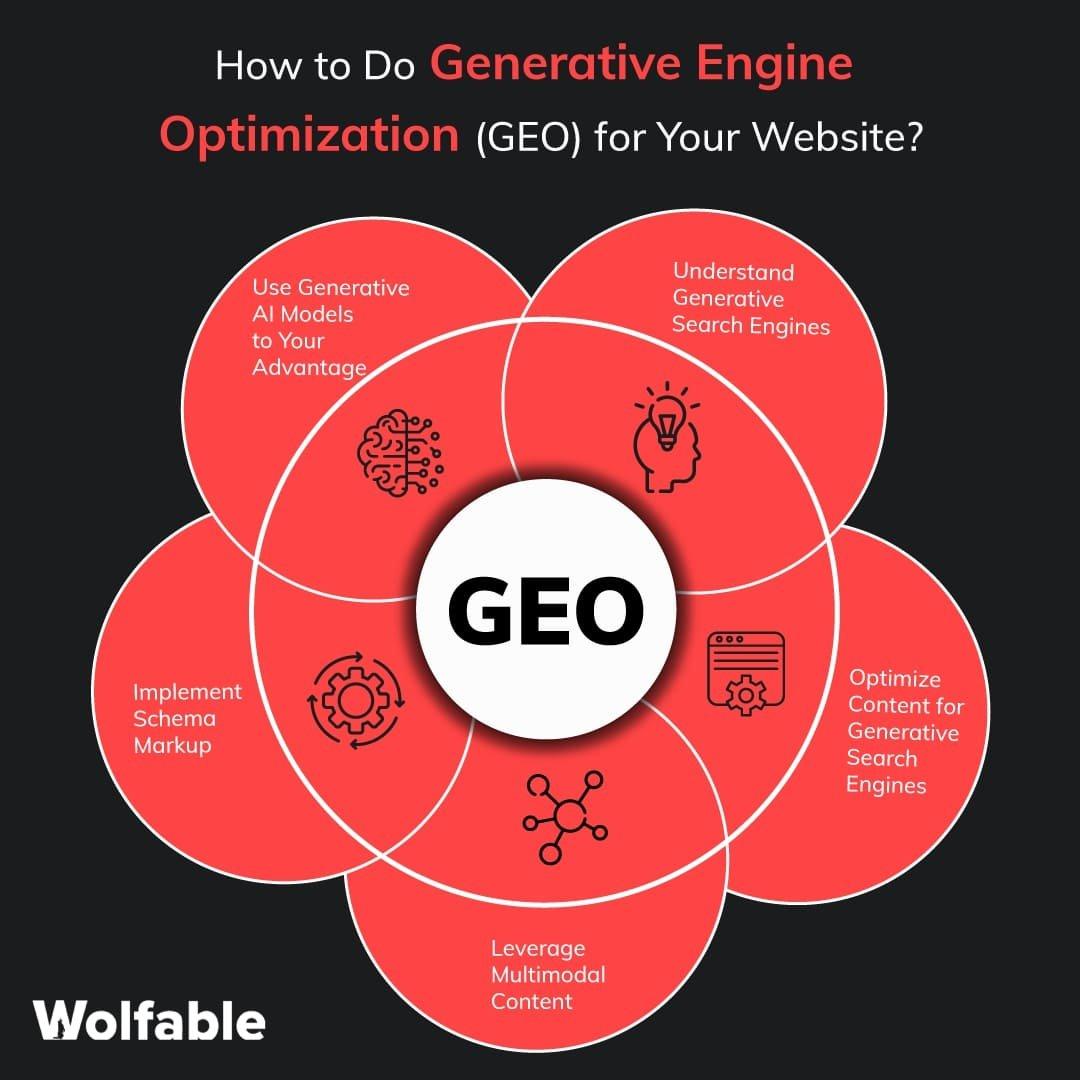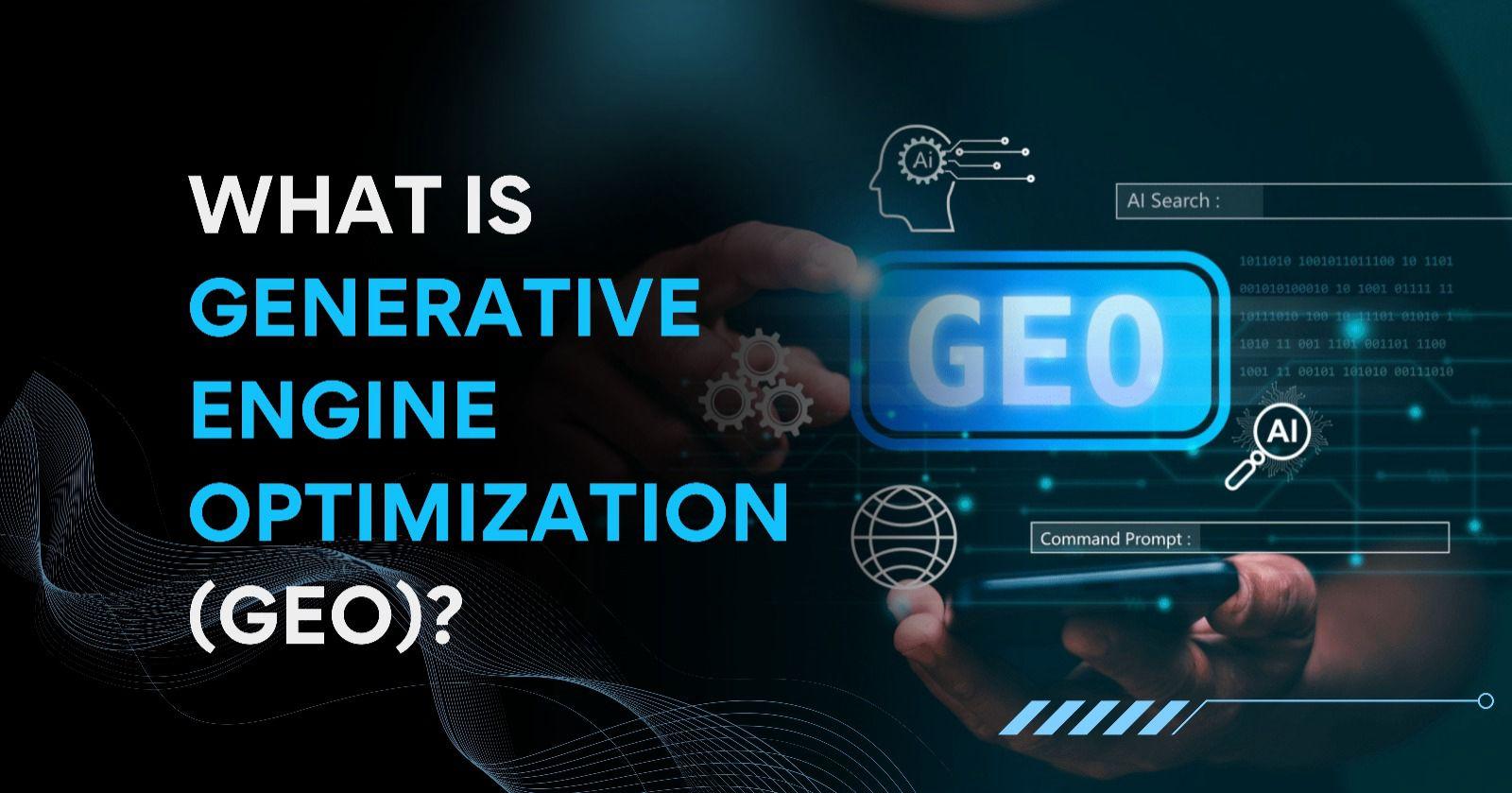Looking to supercharge your WordPress site? Dive into Generative Engine Optimization! This beginner-friendly guide will help you harness AI-driven content strategies to boost SEO, enhance user experience, and drive traffic. Ready to transform your site? Let’s get started!
Generative Engine Optimization for WordPress (Beginners’ Guide)
Introduction: Unleashing the Power of Generative Engine Optimization for Your WordPress Site
Hey there, fellow WordPress enthusiast! If you’ve ever felt overwhelmed by the endless possibilities of optimizing your website, you’re not alone. Whether you’re just starting out or looking to enhance your existing site, the world of Generative Engine Optimization (GEO) can seem like a complex maze. But fear not! In this beginner’s guide, we’re going to break it down into simple, actionable steps that will not only boost your site’s performance but also elevate its visibility in search engine results.
Imagine having a WordPress site that attracts more visitors, engages your audience, and ultimately drives conversions. Sounds good, right? That’s where GEO comes into play. This innovative approach goes beyond traditional SEO techniques, leveraging the power of generative models to create personalized, AI-driven content that resonates with your audience. So, if you’re ready to transform your website and captivate your visitors like never before, let’s dive into the exciting world of Generative Engine Optimization together!
Understanding the Power of Generative Engine Optimization
In today’s digital landscape, the way we optimize our content can make a monumental difference in how it engages audiences and performs across various platforms. Generative Engine Optimization (GEO) is a relatively new concept that harnesses the power of artificial intelligence to enhance the efficiency and effectiveness of your WordPress website. By understanding and implementing GEO, you can significantly improve your site’s visibility and user experience.
At its core, GEO leverages advanced algorithms to analyze user behavior and content performance. This means you can create highly tailored content that resonates with your audience. Here are some key benefits of integrating GEO into your WordPress strategy:
- Enhanced Content Creation: GEO tools can help you generate ideas or even drafts, freeing up your time for more strategic tasks.
- Improved SEO: By predicting trends and keyword performance, GEO can guide your optimization efforts, ensuring your content ranks higher in search engines.
- Personalization: These tools enable you to create personalized experiences for users, boosting engagement and retention rates.
- Data-Driven Insights: GEO analyzes vast amounts of data, providing insights that can help you adjust your strategies in real time.
To truly harness the power of GEO, you need to integrate it seamlessly with your existing WordPress setup. Most GEO tools come with user-friendly interfaces and plugins that can be easily incorporated into your workflow. For instance, plugins like Yoast SEO or Rank Math can assist you in optimizing your content while providing suggestions based on data-driven research.
Here’s a quick comparison of some popular GEO tools that can complement your WordPress efforts:
| Tool | Key Features | Best For |
|---|---|---|
| Yoast SEO | On-page SEO analysis, readability check, snippet preview | Content creators focused on SEO |
| Rank Math | Built-in keyword suggestions, schema markup support | Advanced SEO users |
| SEMrush | Competitor analysis, keyword tracking, content optimization | Marketing professionals |
Moreover, it’s essential to stay updated on the latest trends in content consumption. As user preferences shift, GEO can help you pivot your strategy accordingly. For instance, integrating multimedia elements like images, videos, and infographics can enhance user engagement. GEO tools can analyze which formats resonate best with your target audience, allowing you to make data-informed decisions.
embracing Generative Engine Optimization is not just a trend; it’s a necessary evolution in the way we approach content creation and distribution on platforms like WordPress. By leveraging its capabilities, you can create more engaging, personalized, and optimized experiences for your audience, making your content stand out in a crowded digital space.
Why Your WordPress Site Needs Generative Engine Optimization
In today’s digital landscape, simply having a WordPress site is no longer enough to stand out. Competition is fierce, and your content must not only be engaging but also optimized for search engines. This is where Generative Engine Optimization (GEO) comes into play. By leveraging the power of AI-driven technologies, you can enhance your site’s visibility and engagement potential like never before.
What is Generative Engine Optimization? It revolves around utilizing AI tools and algorithms to create content that resonates with your target audience while adhering to SEO best practices. This means generating content that is not only relevant and informative but also optimized for search engines, increasing your chances of ranking higher on search results.
Here are a few reasons why implementing GEO is crucial for your WordPress site:
- Enhanced Content Creation: Automated tools can help you generate high-quality blog posts, product descriptions, and social media content quickly and efficiently.
- Data-Driven Insights: AI systems analyze user behavior and trends, providing you with valuable insights that inform your content strategy.
- Improved User Experience: Personalized content generated through GEO can lead to higher engagement rates, keeping visitors on your site longer.
- Time Efficiency: By automating parts of your content creation process, you free up time to focus on other aspects of your business.
To visualize the impact of GEO, consider the following table that showcases potential improvements from implementing generative optimization:
| Metric | Before GEO | After GEO |
|---|---|---|
| Page Views | 1,000 | 2,500 |
| Engagement Rate | 40% | 70% |
| Conversion Rate | 2% | 5% |
Incorporating GEO into your WordPress strategy is not just a trend; it’s a necessity for those who want to thrive in the digital space. The combination of AI capabilities and content optimization allows you to deliver what your audience craves while achieving better search engine rankings. So, if you’re ready to elevate your WordPress site, embracing Generative Engine Optimization could be your next best move.

Key Principles of Generative Engine Optimization Explained
When diving into the world of Generative Engine Optimization (GEO), it’s essential to grasp a few foundational principles that can significantly enhance your WordPress site’s performance and user engagement. Understanding these core tenets can transform the way you create and manage content, ensuring that your website not only attracts visitors but retains them as well.
One of the key principles of GEO is to prioritize quality over quantity. While it might be tempting to pump out frequent posts, focusing on creating high-quality, in-depth content that provides genuine value to your readers is paramount. This approach not only boosts your credibility but also encourages organic backlinks and shares, which are vital for SEO.
Another principle revolves around the use of data-driven insights. Leverage tools like Google Analytics or WordPress-specific plugins to monitor user behavior on your site. Understanding which types of content resonate most with your audience allows you to tailor future posts to meet their needs and preferences. This method helps in crafting personalized experiences, elevating your SEO game considerably.
Incorporating visual elements is also crucial. Research indicates that articles with images receive significantly more engagement than those without. Include relevant images, infographics, or videos to break up text and enhance the overall user experience. Consider these visual best practices:
- Optimize images for faster loading times.
- Use alt tags for better SEO.
- Ensure visuals are responsive across all devices.
Additionally, fostering a sense of community can dramatically impact your site’s success. Encourage comments and discussions within your posts. Engaging with your readers not only builds relationships but also improves your site’s credibility and visibility. Use calls to action to motivate your audience to share their thoughts and feedback.
| Element | Importance |
|---|---|
| Quality Content | Drives traffic and improves SEO |
| Data-Driven Insights | Helps tailor content to audience needs |
| Visual Elements | Enhances engagement and retention |
| Community Engagement | Builds loyalty and trust |
staying adaptable and open to experimentation is vital. The digital landscape is ever-changing, so regularly assess the effectiveness of your strategies. Test different types of content, posting schedules, and promotional tactics. Be prepared to pivot as necessary based on your findings. This adaptability not only keeps your content fresh but also positions you as a forward-thinking authority in your niche.

Getting Started with Generative Engines on WordPress
Embracing generative engines within WordPress can be a game-changer for content creation, making it not just easier but also significantly more efficient. Whether you’re a blogger, a business owner, or a creative professional, leveraging these tools allows you to enhance your content strategies and engage your audience in innovative ways.
To get started, you’ll need to explore the various generative engines available. Some popular options include:
- GPT-3: Known for its high-quality text generation.
- DALL-E: Perfect for creating stunning visuals from text descriptions.
- ChatGPT: Ideal for generating conversational content and FAQs.
Once you’ve chosen a generative engine, integrating it into your WordPress site can be done seamlessly. Most plugins designed for generative engines allow you to connect your site directly with the engine’s API. Here’s a simple step-by-step guide:
- Install and activate the relevant plugin from the WordPress repository.
- Access the plugin settings and enter your API key.
- Customize the settings to match your content needs.
- Start generating content directly from your WordPress editor.
Utilizing generative engines not only streamlines content production but can also optimize SEO efforts. To ensure your generated content ranks well, consider the following tips:
- Keyword Optimization: Always include relevant keywords in your content.
- Content Structure: Use headers, bullet points, and short paragraphs for readability.
- Meta Descriptions: Don’t forget to create compelling meta descriptions for better click-through rates.
To help visualize how generative engines can be utilized effectively, here’s a simple comparison table of their strengths:
| Engine | Strengths | Best Use Cases |
|---|---|---|
| GPT-3 | Text generation, creativity | Blog posts, articles |
| DALL-E | Image creation from text | Social media graphics, web visuals |
| ChatGPT | Conversational engagement | Customer service FAQs, chatbots |
opens up a world of possibilities for content creators. By understanding the tools at your disposal and how to integrate them effectively, you can enhance your site’s content quality and user engagement like never before. So, what are you waiting for? Dive in and start exploring the potential of generative engines today!
Essential Tools and Plugins for Effective Optimization
To truly harness the power of your WordPress site for generative engine optimization, having the right tools and plugins is crucial. These resources not only streamline the process but also enhance the effectiveness of your optimization efforts. Here are some essential tools and plugins that can elevate your content optimization game:
- Yoast SEO: This widely-used plugin helps you optimize your posts for search engines with its user-friendly interface. It offers real-time content analysis, keyword suggestions, and readability scores, ensuring that your text is both engaging and visible.
- Rank Math: A powerful alternative to Yoast, Rank Math integrates seamlessly with WordPress and provides advanced SEO features. It includes Google Schema markup, keyword tracking, and even a 404 monitor to keep your site error-free.
- MonsterInsights: To evaluate the performance of your content, integrating Google Analytics with MonsterInsights can provide valuable insights. This plugin allows you to track user behavior, traffic sources, and conversion rates directly from your WordPress dashboard.
Beyond SEO plugins, consider the following tools for optimizing your content creation process:
- Canva: Visual content is key in today’s digital landscape. Canva offers a user-friendly design platform to create stunning graphics that can enhance your blog posts and attract more visitors.
- Grammarly: A writing assistant that helps you polish your content, Grammarly checks for grammar, punctuation, and style suggestions. This ensures your writing is clear and professional, crucial for maintaining credibility.
- Ahrefs: For those ready to invest in a comprehensive SEO tool, Ahrefs provides in-depth keyword research, backlink analysis, and competitor insights, helping you refine your content strategies for maximum impact.
Additionally, leveraging caching and performance optimization plugins can significantly improve your site’s loading speed, which is a vital factor for both SEO and user experience:
| Plugin | Key Feature | Best For |
|---|---|---|
| WP Rocket | Page caching, GZIP compression | Speed optimization |
| W3 Total Cache | Browser caching, CDN support | Advanced users |
| Autoptimize | Minification of CSS/JS | Improving load times |
By combining these essential tools and plugins, you can streamline your optimization efforts and enhance the overall performance of your WordPress site. Remember, the right resources not only save time but also contribute to a more engaging and effective online presence.
Crafting Content that Engages and Converts
Creating content that not only captures attention but also drives action is essential for any website, especially when utilizing the power of generative engines. To achieve this, you need to understand the core elements that make your content resonate with your audience.
First and foremost, know your audience. Tailoring your message to meet the specific needs, preferences, and pain points of your readers will lay the groundwork for engagement. Consider the following strategies:
- Conduct audience research to gather insights into their interests.
- Create personas that represent different segments of your audience.
- Use analytics tools to track what content performs best.
Next, focus on creating captivating headlines. A compelling title is often the first interaction a user has with your content. It should be intriguing, clear, and promise value. A/B testing different headlines can provide insights into what resonates most with your audience.
| Headline Type | Example | Effectiveness |
|---|---|---|
| How-To | How to Optimize Your WordPress Site for SEO | High |
| Listicle | 10 Tips for Engaging Your Audience | Medium |
| Question | Are You Making These Content Mistakes? | High |
Once you’ve captured attention, the quality of your content must sustain it. Aim for clarity and conciseness. Use short paragraphs, bullet points, and subheadings to make your content scannable. Establish a conversational tone that feels personal and relatable, encouraging readers to stay engaged.
Incorporate calls to action (CTAs) throughout your content to guide readers toward the next steps. Whether it’s subscribing to a newsletter, downloading an e-book, or commenting on a post, CTAs should be clear and compelling. Experiment with placement and wording to find what generates the most responses.
Lastly, remember to consistently measure your content’s performance. Utilize tools like Google Analytics and social media insights to track engagement metrics. This data will inform your future content strategies, helping you refine your approach and enhance your effectiveness in converting visitors into loyal readers.

Measuring Success: Metrics to Track Your Optimization Efforts
When it comes to optimizing your WordPress site, understanding how to measure success is crucial. You need to identify the right metrics that reflect the effectiveness of your optimization strategies. Here are some key metrics to keep an eye on:
- Page Load Time: This is a critical metric as it directly affects user experience. Use tools like Google PageSpeed Insights or GTmetrix to track your site’s loading speed.
- Bounce Rate: A high bounce rate may indicate that visitors are leaving your site too quickly. Analyze the pages with high bounce rates to understand why users aren’t engaging.
- Conversion Rate: Whether it’s signing up for a newsletter or making a purchase, tracking your conversion rates can help gauge the success of your optimization efforts.
- Organic Traffic: Monitor your organic search traffic to see how well your SEO strategies are performing. Tools like Google Analytics can provide insights into traffic source breakdowns.
Another valuable set of metrics revolves around user engagement. These can offer a glimpse into how visitors are interacting with your content. Key engagement metrics include:
- Average Session Duration: Measure how long users stay on your site. Longer sessions typically indicate that your content is engaging and valuable.
- Pages Per Session: This metric reflects how many pages a visitor views in one session. A higher number suggests that your internal linking and content appeal are effective.
- Social Shares: Track how often your content is shared on social media. This can help gauge the resonance of your content with your audience.
| Metric | Tool | Importance |
|---|---|---|
| Page Load Time | Google PageSpeed Insights | Impact on SEO and User Experience |
| Bounce Rate | Google Analytics | Visitor Engagement Indicator |
| Conversion Rate | Google Analytics | Business Goals Achievement |
| Organic Traffic | Google Search Console | SEO Success Measurement |
remember to set specific goals for these metrics. For example, aim for a page load time of under 3 seconds or a bounce rate below 40%. Regularly reviewing these metrics will not only help you understand how well your optimization efforts are performing but also guide you in making necessary adjustments to your strategies.

Common Pitfalls to Avoid in Generative Engine Optimization
When diving into generative engine optimization, especially for WordPress, it’s easy to stumble into common traps that can hinder your site’s performance and visibility. Here are some pitfalls to watch out for:
- Neglecting User Intent: Focusing too heavily on keywords without considering what users are actually looking for can lead to content that fails to engage. Always prioritize creating valuable content that addresses user needs.
- Over-Optimization: While it’s important to include keywords and phrases, overstuffing content can result in a poor user experience and can even negatively impact your SEO. Aim for a natural flow that reads well.
- Ignoring Mobile Optimization: With a significant amount of web traffic coming from mobile devices, ensuring your generative engine is responsive is crucial. Neglecting this can alienate a large portion of your audience.
- Forgetting to Update Content: Generative engines thrive on fresh, relevant content. Failing to update existing posts with new information or insights can lead to stagnation. Regularly revisit your content to keep it current.
- Disregarding Analytics: After implementing your optimization strategies, it’s vital to monitor performance metrics. Not using tools like Google Analytics or WordPress plugins to track what works and what doesn’t can lead to missed opportunities for improvement.
Additionally, avoid making these more technical errors:
- Using Generic Titles: Titles should be catchy and relevant to your content, as they serve as a major ranking factor. Ensure they also align with the content they represent.
- Skipping Alt Text for Images: Generative engines can’t “see” images, so providing descriptive alt text is essential for both SEO and accessibility. This small step can make a big difference in how your content is indexed.
| Common Pitfalls | Impact | Solution |
|---|---|---|
| Neglecting User Intent | Low engagement & high bounce rates | Focus on user-centered content |
| Over-Optimization | Poor readability & SEO penalties | Prioritize natural language |
| Ignoring Mobile Optimization | Loss of mobile traffic | Use responsive design themes |
| Forgetting to Update Content | Outdated information & decreased relevance | Set a content review schedule |
By sidestepping these common pitfalls, you can enhance your WordPress site’s performance and ensure that your generative engine optimization efforts yield the best possible results. Remember, the goal is not just to rank higher, but to also provide a valuable and enriching experience for your visitors.

Future Trends in Generative Engine Optimization for WordPress
As technology continues to evolve, the landscape of Generative Engine Optimization (GEO) for WordPress is set to transform in several exciting ways. With advancements in artificial intelligence and machine learning, website owners can anticipate a more tailored approach to content creation and optimization, enhancing user experience and engagement.
One of the most significant trends on the horizon is the integration of AI-driven content personalization. This technology will enable websites to generate content that resonates with individual users based on their preferences and behaviors. Imagine a WordPress site that can dynamically alter its articles, images, and even layout to match what each visitor finds most appealing. This level of customization is bound to improve retention rates and conversion metrics.
In addition, the rise of voice search is reshaping how content is created and optimized. As more users turn to voice-activated devices, WordPress sites will need to focus on natural language processing. This means that keywords and phrases must align more closely with how people speak rather than how they type. GEO techniques will adapt to incorporate this shift, ensuring that your content remains relevant in a voice-first world.
Another exciting prospect is the evolution of automated SEO tools. These tools will leverage AI to analyze vast amounts of data and provide real-time recommendations for optimizing content. For WordPress users, this could mean automated keyword suggestions, backlink analysis, and even content structuring based on current trends. With more sophisticated analytics at our fingertips, making data-driven decisions will become simpler and more effective.
| Trend | Description |
|---|---|
| AI-Driven Content Personalization | Generates unique content experiences tailored to user preferences. |
| Voice Search Optimization | Adapts content strategy for natural language queries. |
| Automated SEO Tools | Utilizes AI for real-time optimization suggestions. |
Moreover, as we move towards a more visual internet, the importance of image and video optimization cannot be overstated. Future GEO strategies will prioritize multimedia content, focusing on leveraging generative tools to create captivating visuals that enhance storytelling. WordPress will need to harness these capabilities to ensure that sites are not only functional but also visually appealing.
the ongoing development of blockchain technology could also influence GEO practices. By providing a secure way to verify content authenticity, blockchain could help in building trust with users, which is often a significant factor in SEO rankings. WordPress could see plugins that integrate blockchain to verify authorship and content originality, giving users peace of mind while also improving site credibility.

Conclusion: Taking Your WordPress Site to the Next Level with Generative Engines
As you embark on the journey of enhancing your WordPress site with generative engines, it’s essential to understand that the true potential of these tools lies in their ability to optimize various elements of your site. By harnessing generative technology, you can create engaging content, streamline your design process, and ultimately improve the user experience. Here’s how you can take full advantage of these innovations:
- Content Creation: Utilize generative engines to produce unique blog posts, product descriptions, or marketing copy. This not only saves you time but also provides fresh perspectives that can captivate your audience.
- Image and Multimedia Generation: Integrate AI-driven tools to create optimized images, videos, and even graphics that resonate with your brand voice and enhance your site’s visual appeal.
- SEO Optimization: Employ generative engines to analyze keyword trends and suggest content strategies that align with your audience’s search behavior, helping you climb the search engine rankings.
- Personalization: Leverage AI to tailor content based on user behavior and preferences, making your website feel more tailored and relevant to individual visitors.
Moreover, the integration of generative engines can significantly reduce the time spent on mundane tasks. For instance, instead of spending hours writing and editing content, you can let AI handle the heavy lifting while you focus on strategy and growth. Imagine generating multiple variations of a blog post in minutes, allowing you to choose the best one without the painstaking process of writing from scratch.
When it comes to design, tools powered by generative engines can assist in creating layouts that are not only visually appealing but also optimized for user engagement. By using AI-driven design plugins, you can experiment with various themes and aesthetics without the need for extensive coding knowledge, making it accessible for beginners.
In addition, a successful WordPress site requires continuous improvement and monitoring. Generative engines can assist in analyzing user data, providing insights on how visitors interact with your site. This information can inform your future content and design decisions, ensuring that you’re always moving in the right direction.
Ultimately, the key to taking your WordPress site to the next level is to embrace the capabilities that generative engines offer. By leveraging these tools, you can enhance not only the performance and aesthetics of your site but also create a more engaging experience for your users, driving both retention and growth.
Frequently Asked Questions (FAQ)
Q&A: Generative Engine Optimization for WordPress (Beginners’ Guide)
Q1: What is Generative Engine Optimization (GEO) and why should I care about it?
A1: Great question! Generative Engine Optimization, or GEO, is all about optimizing your WordPress site so that it plays nicely with generative AI technologies like chatbots, content generators, and more. If you want your site to stand out in today’s digital landscape, understanding GEO can give you a competitive edge. It’s not just about great content anymore; it’s about making sure your content is easily understood and utilized by AI tools.
Q2: Do I need to be tech-savvy to implement GEO on my WordPress site?
A2: Not at all! That’s the beauty of this guide. We’re breaking it down for beginners, meaning you don’t need to have a PhD in computer science to get started. With a little guidance and the right tools, you’ll be optimizing your site like a pro in no time!
Q3: What are some basic steps I can take to start optimizing my WordPress site for generative engines?
A3: Excellent! Here are a few simple steps:
- Content Quality: Focus on high-quality, relevant content that answers users’ questions.
- Structured Data: Use schema markup to help search engines understand your content better.
- Keywords: Research and integrate keywords that align with what your audience is searching for.
- User Experience: Ensure your site is easy to navigate and mobile-friendly.
- Performance Optimization: Speed up your site with caching plugins and image optimization.
These foundational steps will set you on the right path!
Q4: What tools can I use to help with GEO on my WordPress site?
A4: There’s a treasure trove of tools out there! For content optimization, consider using plugins like Yoast SEO or Rank Math. For structured data, Schema Pro is fantastic. And for performance, try WP Rocket or Smush for image optimization. These tools can help you implement GEO practices with ease!
Q5: How does GEO improve my site’s visibility and engagement?
A5: GEO enhances your site’s visibility by making it more compatible with AI technologies. When your site is optimized, it becomes easier for search engines and AI to understand and recommend your content. This can lead to improved rankings, better user engagement, and ultimately, more traffic. It’s like giving your content a megaphone!
Q6: Is this a one-time process, or do I need to keep optimizing?
A6: Think of GEO as an ongoing journey rather than a destination. The digital landscape is always evolving, and so are the AI tools that interact with your site. Regularly updating your content, monitoring performance, and keeping up with SEO trends will ensure you stay ahead of the curve.
Q7: Can I implement GEO strategies myself, or should I hire a professional?
A7: While hiring a professional can definitely speed up the process, many beginners have successfully implemented GEO strategies on their own, especially with the guidance from this article. Start small, take your time, and don’t hesitate to seek help if you feel stuck. The more you learn, the better your site will perform!
Q8: What are the long-term benefits of investing time in GEO for my WordPress site?
A8: Investing time in GEO can lead to significant long-term benefits, including improved search rankings, enhanced user experience, and increased traffic. Plus, as AI technologies continue to shape the online landscape, being ahead of the game means your site will be more adaptable and future-proof. It’s a small investment of your time that can yield big returns!
Q9: Where can I find more resources to help me with GEO?
A9: You’re in luck! There are countless blogs, forums, and online courses dedicated to GEO and SEO. Websites like Moz, SEMrush, and even the official WordPress site offer valuable insights. Plus, don’t forget to revisit this guide as you continue your optimization journey!
Q10: Ready to get started with GEO? What’s my first step?
A10: Absolutely! Your first step is to assess your current WordPress site. Analyze your content, speed, and overall user experience. From there, pick one or two GEO strategies to implement today, and you’ll be on your way to creating an optimized site that’s ready for the future. Let’s unlock the potential of your WordPress site together!
—
Feel free to dive deeper into any of these questions as you explore the fascinating world of Generative Engine Optimization!
In Summary
As we wrap up our exploration of Generative Engine Optimization for WordPress, remember that the journey doesn’t end here. You’ve just unlocked the door to a realm where creative potential meets cutting-edge technology. Now, it’s time to put your newfound knowledge into action.
Whether you’re a blogger looking to enhance your content or a business owner eager to attract more customers, leveraging generative engines can set you apart in the crowded digital landscape. Experiment with the tools and techniques we’ve discussed, and don’t hesitate to tweak them to suit your unique needs.
And here’s a little secret: the more you practice, the more you’ll discover the true power of generative optimization. So go ahead, dive in, and start creating stunning content that not only engages your audience but also boosts your site’s visibility.
If you have questions or need further guidance, the WordPress community is filled with friendly faces ready to help. Keep learning, keep experimenting, and most importantly, keep creating. Your WordPress journey is just beginning, and the best is yet to come! Happy optimizing!





